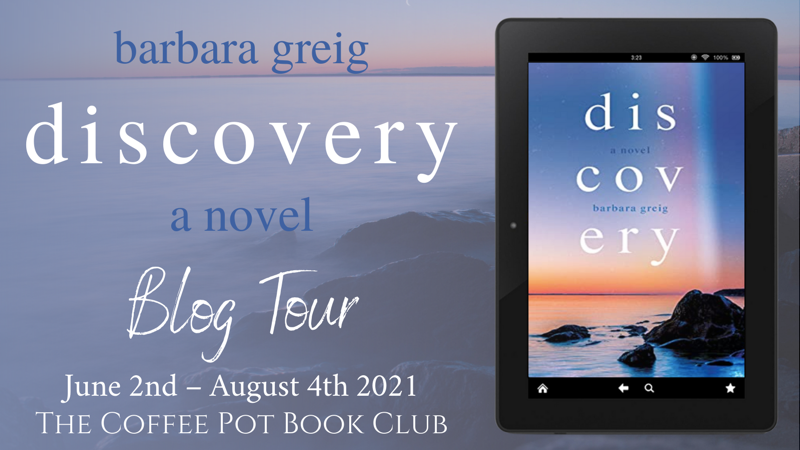
Discovery: An epic tale of love, loss and courage When Elizabeth Gharsia’s headstrong nephew, Gabriel, joins Samuel Champlain’s 1608 expedition to establish a settlement at Quebec, he soon becomes embroiled in a complicated tribal conflict. As months turn into years, Gabriel appears lost to his family.
Meanwhile at home in France the death of her father, Luis, adds to Elizabeth’s anguish. Devastated by her loss, she struggles to make sense of his final words. Could her mother’s journals, found hidden among Luis’s possessions, provide the key to the mystery?
The arrival of Pedro Torres disrupts Elizabeth’s world even further. Rescued from starvation on the streets of Marseille by her brother, Pedro is a victim of the brutal expulsion of his people from Spain. Initially antagonistic, will Elizabeth come to appreciate Pedro’s qualities and to understand the complexity of her family?
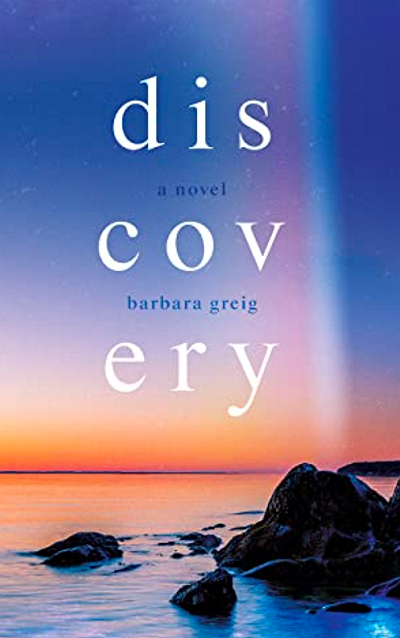
Inspiration behind Discovery
When this question was posed to me with regards to Discovery I was temporarily discombobulated (I love that word!). Where to start? I could pinpoint the initial concept – as a historian I had always been interested in the fate of Spanish Moriscos, and religious persecution, but what of those other details which flesh out the bones of a plot? In my debut novel Secret Lives I had already delved those themes but I wanted to include other areas in Discovery especially European exploration.
The main characters in my novel are fictitious but they exist in a historical context and are representative of their period. I have taught many sixteenth and seventeenth century topics during my career as a history teacher so I could draw on that resource. However, although there is an argument that we can’t give people in the past the same outlook as we have today, I do feel that essentially human beings haven’t changed that much in the last five hundred years. In Elizabeth Gharsia we see the youngest daughter, unmarried and caring for her ageing father, struggling to come to terms with family secrets; Gabriel, young and headstrong, chafing against the path laid out for him and longing for adventure and Pedro the refugee who seeks a better life are all people we can recognise today.
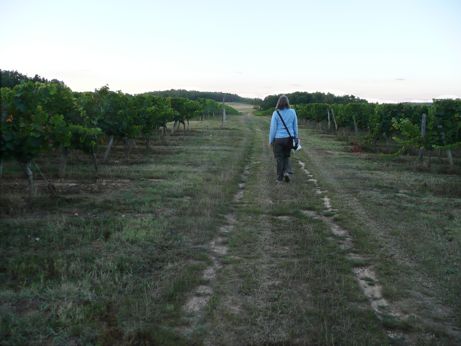
Creating my fictitious characters is a joy. They are never inspired by a particular person but are the sum of everyone I’ve met or even just observed. When I see them newly created in my imagination sometimes I experience a flash of clarity e.g. the way a child behaves – am I remembering my son when he was that age? I see an actor on television or a famous sportsman – is there something familiar about them? Do they remind me of one of my characters?
When I was a child I loved to play with paper dolls – giving them different hair colour and styles and different clothes. I think I might be still doing this with my characters – readers always know the hair and eye colour of my characters and often what they are wearing. I can argue that the latter adds to the historical authenticity. One strange phenomenon which has occurred is that my characters evolve and develop their own personalities, often taking control of their role in the book. I was pleased when I read that other authors had experienced this. I have had characters who were destined for a minor part and who clamoured for more. I acquiesced! I’m sure this is all in my head. My mother always told me that I had too vivid an imagination.
As a young child my grandparents gave me a book about the different peoples of the world and this sparked a fascination which has remained with me. My interest in the First Nations of North America was a result of this and reaches back twenty years to when I first visited that continent. Most of the details in my book about First Nation life were inspired by my visits to museums. Placing Gabriel in the New World was inspired by Samuel Champlain’s expedition to establish a settlement on the St Lawrence River. In the manifest of the settlers there are some unnamed members who were labelled lackey so I slotted Gabriel and Luc into Champlain’s crew as these.
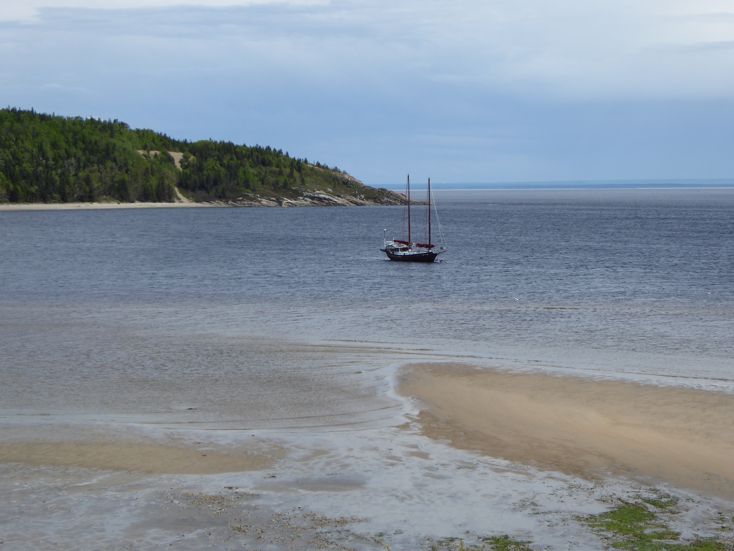
Champlain’s account of his 1608 expedition provided me with a lot of detail which I used as a springboard in my book although I did marry what I had read with what I experienced when I travelled along Gabriel’s route from landing at Tadoussac to the southern tip of Lake Champlain. I visited exhibits of First Nation homes, canoes, clothing and armour. I learnt that Champlain’s name for the Montagnais was his own creation and that the tribe is the Innu although I used the former name for the seventeenth century context. Before I started researching for Discovery I was unaware (as a Brit) how significant a figure Samuel Champlain was. By the time I had studied all the relevant exhibits in Quebec and in Vermont I had a copious amount of information to inspire me. The couriers de bois, those young men Champlain sent to live with the Huron gave me the idea to create the storyline of Gabriel’s experience.
I have loved the Pays d’Oc area of France for many years. The old city of Cahors is inspiring. It transports you back to another time and it is easy for me to believe my characters walked its uneven streets.

The small house on the corner of Place St Urcisse is now a restaurant, usually full of locals enjoying the excellent menu, while Ysabel’s house is inspired by a wonderful old house facing the River Lot. Many farmhouses in Quercy retain their old features although I had to be careful not to include the distinctive dovecotes which didn’t make an appearance until the late seventeenth century. The Gaulberts’ home is modelled on the farm where I tasted my first glass of Cahors wine (some time ago) and where we camped as a family when our children were young.
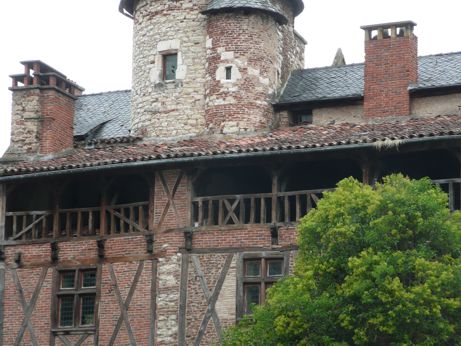
In the English places my characters visit, the medieval remains are not so numerous but there are some gems for the novelist. The old streets of Lewes are still discernible, especially if you have a good map, and Anne of Cleves’ house gave me the idea of Edward Mercer modernizing his substantial property.
Experiences, or memories, are like shifting sand but I never fail to be surprised at what I can sometimes recall. I am not necessarily sitting writing at the time of recollection. Sometimes I am walking or ironing, gardening or dancing and I remember a conversation or a gesture which leads me to create a certain scene in the novel. I remember being among the vines, sheltering from a storm under a tree, or walking on creaky snow – all of which make an appearance in Discovery as does moonlight filtering through shutters.
Finally, as my historical knowledge is predominately based on reading, whether primary or secondary sources in books or on museum information boards I am inspired as I research and write. This leads to what I call the chain of inspiration – each discovery leads to another.
Available on Kindle Unlimited.
Amazon UK: https://www.amazon.co.uk/Discovery-Barbara-Greig-ebook/dp/B08B8Q4FMV
Amazon US: https://www.amazon.com/Discovery-Barbara-Greig-ebook/dp/B08B8Q4FMV
Amazon CA: https://www.amazon.ca/Discovery-Barbara-Greig-ebook/dp/B08B8Q4FMV
Amazon AU: https://www.amazon.com.au/Discovery-Barbara-Greig-ebook/dp/B08B8Q4FMV
Waterstones: https://www.waterstones.com/book/discovery/barbara-greig/9781838594268
Kobo: https://www.kobo.com/gb/en/search?query=discovery+barbara+greig
Troubador: https://www.troubador.co.uk/bookshop/historical/discovery/
WHSmith: https://www.whsmith.co.uk/products/discovery/barbara-greig/paperback/9781838594268.html
iBooks: https://books.apple.com/gb/book/discovery/id1518775106?mt=11&app=itunes
Google Play: https://play.google.com/store/books/details/Barbara_Greig_Discovery?id=Ja3rDwAAQBAJ
Book Depository: https://www.bookdepository.com/Discovery-Barbara-Greig/9781838594268
Meet Barbara Greig
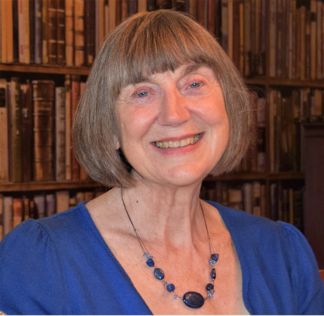
Barbara Greig was born in Sunderland and lived in Roker until her family moved to Teesdale. An avid reader, she also discovered the joy of history at an early age. A last-minute change of heart, in the sixth form, caused her to alter her university application form. Instead of English, Barbara read Modern and Ancient History at Sheffield University. It was a decision she never regretted.
Barbara worked for twenty years in sixth form colleges, teaching History and Classical Civilisation. Eventually, although enjoying a role in management, she found there was less time for teaching and historical study. A change of focus was required. With her children having flown the nest, she was able to pursue her love of writing and story-telling. She has a passion for hiking, and dancing, the perfect antidotes to long hours of historical research and writing, as well as for travel and, wherever possible, she walks in the footsteps of her characters.
Discovery is Barbara’s second novel. Her debut novel Secret Lives was published in 2016 (Sacristy Press).
Connect with Barbara
Twitter: https://twitter.com/BarbaraGreig_
Facebook: https://www.facebook.com/Barbara-Greig-107844424330933
Amazon Author Page: https://www.amazon.com/Barbara-Greig/e/B08CB6LZHC
Goodreads: https://www.goodreads.com/author/show/6567192.Barbara_Greig